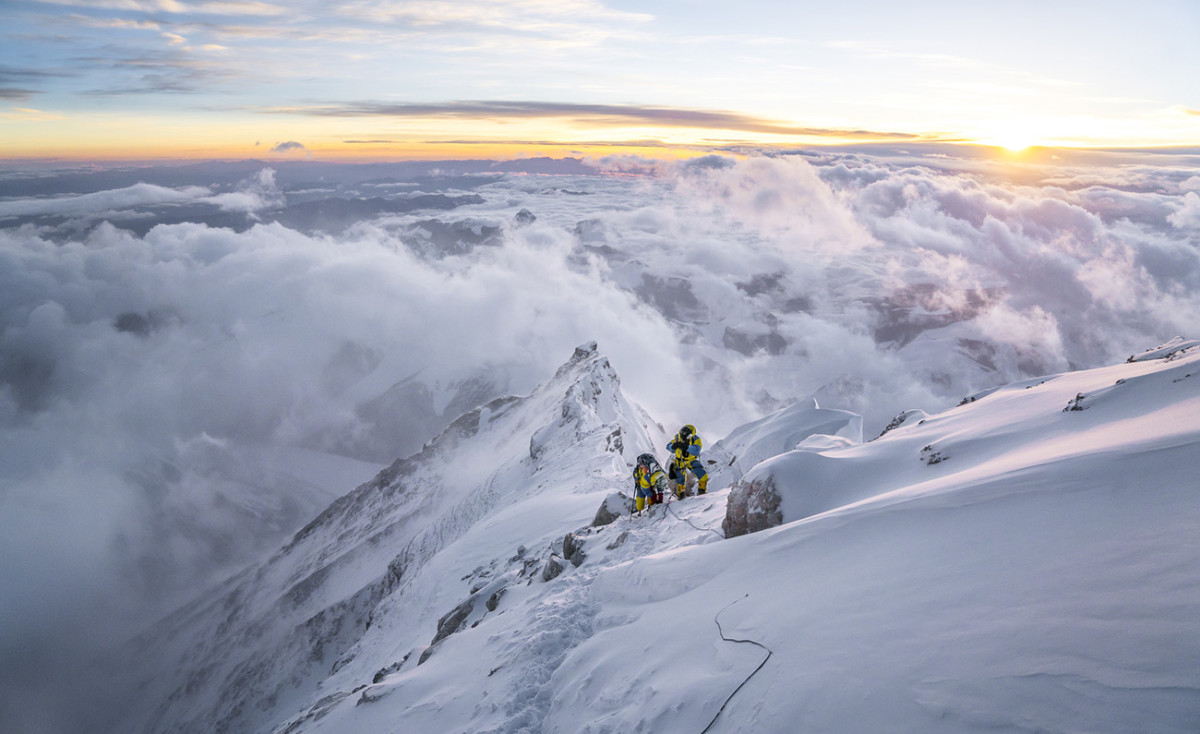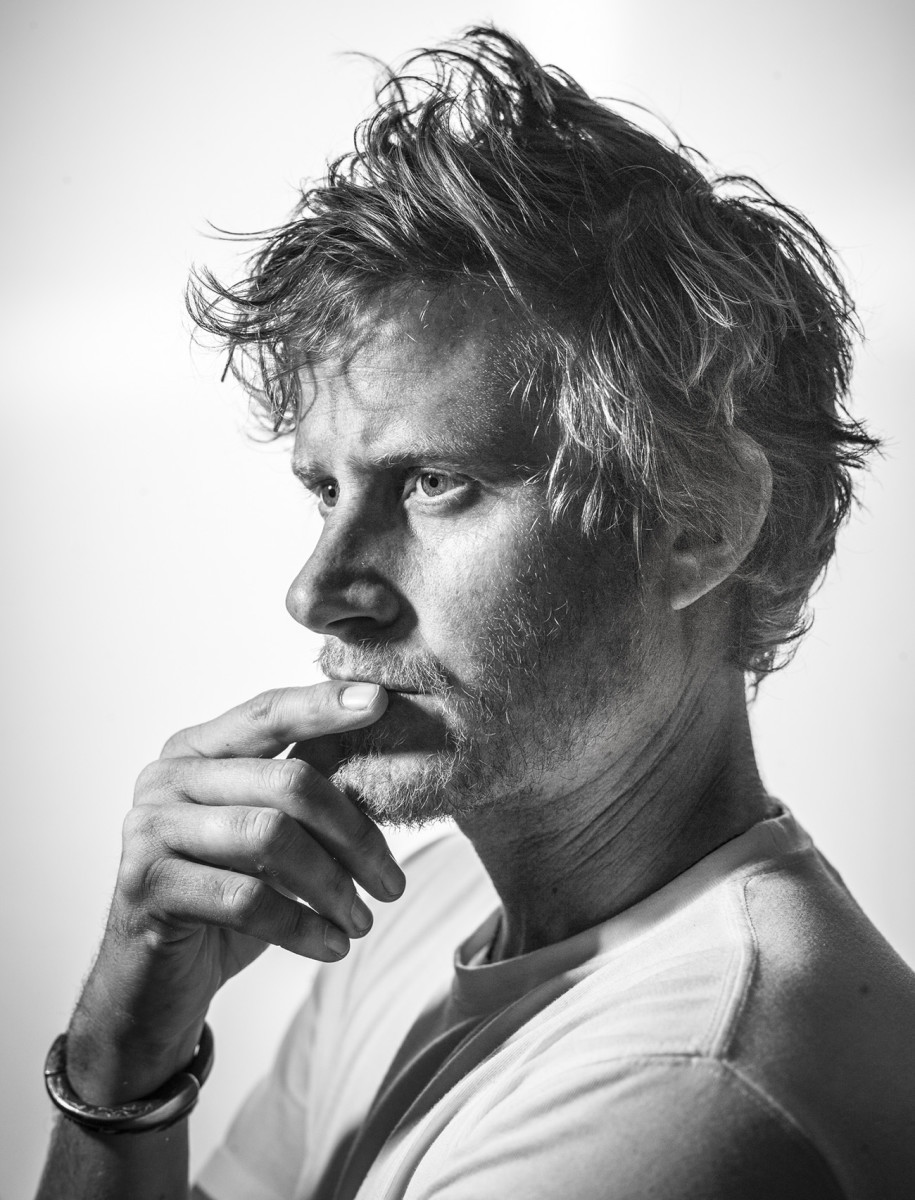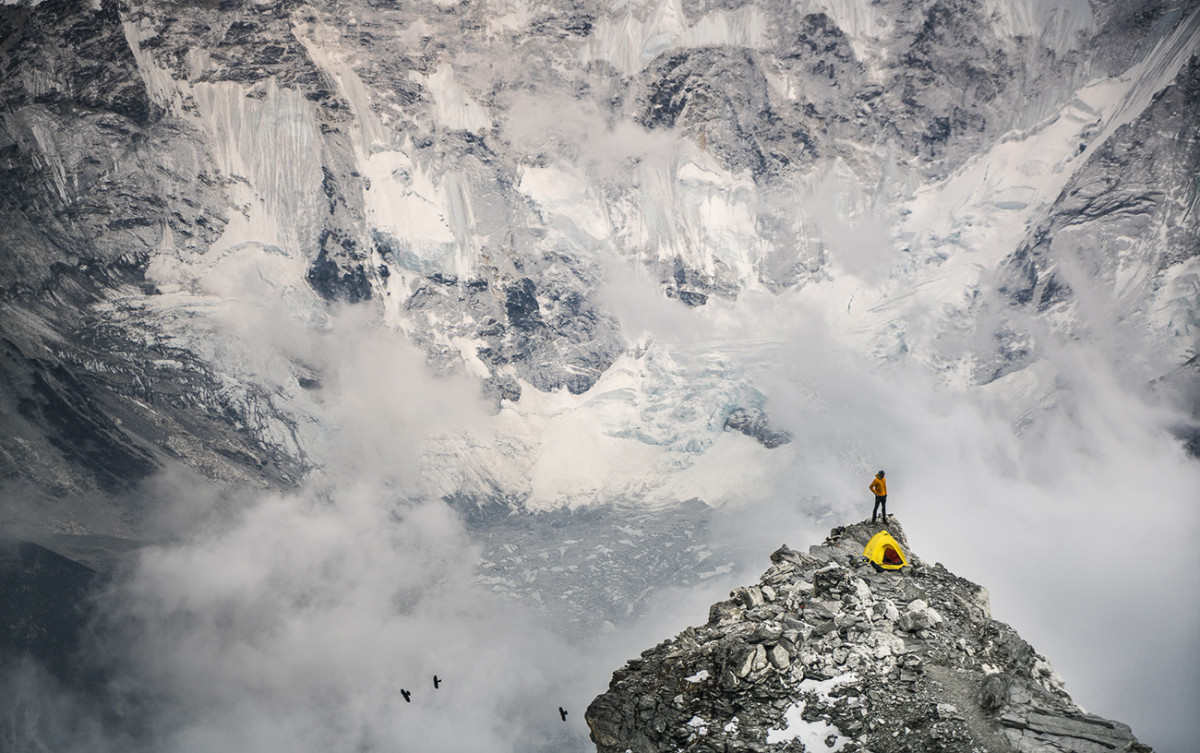Q&A: Cory Richards, the First Climber to Snapchat a Mount Everest Expedition


After two years of no successful climbs on Mount Everest due to deadly tragedies, Cory Richards became one of the climbers to successfully summit Mount Everest this year. By profession, Richards is a photographer for National Geographic magazine. But climbing has been his passion for a long time.
Richards summitedGasherbrum II, the 4th highest peak in the world, on the border of Pakistan in China, in 2011. During descent, he got stuck in a major avalanche. Richards was documenting his journey, turned the camera on himself, and clicked pictures of him crying. He later turned into an award-winning film, Cold. In 2012, Richards was named the National Geographic’s Adventurer of the Year.
Five years later, he summited Mount Everest and he again documented his journey with his partner Adrian Ballinger. Ballinger has climbed Mount Everest six times without oxygen, but their recent journey was unlike any other. They climbed without supplemental oxygen and shared their trip in real time through continuous updates on Snapchat and Instagram under #EverestNoFilter. They wanted to show people the unfiltered life of what it is like to be on Everest. While Cory successfully made it to the top, Adrian had to stop just 350 meters before the summit due to hypothermia.
In an interview with SI Kids, Richards talk about his successful Everest climb, use of social media to share his adventure with the world, and the day-to-day life on the highest peak in the world.
How old were you when you started climbing? When did it become a passion?
I started when I was 5 years old. That’s when my dad started taking my brother and me. We started skiing when we were 2. We started going into the mountains and backpacking when I was 5 and my brother was 7.
Can you talk about your inspiration to climb Everest?
The answer is big and will be hard to articulate. Inspirations are oftentimes unclear. The act of climbing itself is meaningless. It is means to an end. My motivation comes from the idea that we are a small part of a very big system. The smaller we allow ourselves to feel, the more special this life becomes. My motivation is to go out and experience how finite and special this all is. As humans, we view ourselves more and more apart from the natural world versus a part of it. Anytime you can go out and put yourselves in it, you reimmerse in that idea that we are part of it and part of a bigger system and that to me that is special.
What was it like for you to stand on the summit of Everest?
It is anti-climatic. People expect you to have an a-ha, meeting-God moment on the top of the world. The fact is you are lonely, you are fulfilled but you are also empty. The goal you have been striving for is over. Now you have the most dangerous part ahead of you, which is also why it’s somewhat scary. Being on the top is only half way. Guaranteed the next half is going to go much faster, but 80% of mountaineering accidents happen on the descent because people are really tired, the body has been out for a very long time, especially without oxygen. So being on top is this weird experience of somewhat emotional release but yet a huge assumption of tension. You take on this tension that I am as far out as I can be, there is nobody around me, I have no oxygen, I have to go down as fast I can. So, you feel this sense of urgency and adrenaline. But the experience of being on top itself is calm. I was there for three minutes.
Did you wish you could stay at summit longer?
I could have stayed longer, but I had that sense of urgency that it is dangerous and I didn’t want to be there… I didn’t want endanger myself and give myself more brain damage. Basically, you give yourself a low-grade concussion by being up there because there is no oxygen. The longer you stay up there, the more brain cells you are burning through. Our doctor gave me five minutes to be there, and I took three and left.

Do you think that Snapchatting changed the whole climbing experience? For better or worse?
People feel that it takes away from the experience and you are not in the moment. I have to stop people and ask them to go back 100 years. Before social media, people were taking 8x10 or 4x5 view cameras. They were composing photographs and developing those plates in the field and rivers. You have to ask if that process takes you out of the moment more or less than Snapchat. The answer is unequivocally more. Snapchat and Instagram became first ways do real-time storytelling. That doesn’t take away from the experience. In fact, it adds to it. You are able to share that experience in a much more raw, broad, and intimate fashion.
How would you describe your partnership with Adrian?
The only word that comes close to it, and I don’t mean this in sort of a sappy, emotional way, is brotherhood. It is like being with a sibling times 10 because even with a sibling, you are not responsible for each other’s lives day in and day out. And so when you sort of infuse that level of responsibility, it fosters a huge level of intimacy that is very, very hard to put into words. Being on high mountains, being in the Himalayas, you are responsible for each other’s lives in a very real way. It’s only when you know that the consequence of a misstep is potential fatality, you build that level of intimacy that builds that strong of a bond.
What was it like for you when you watched Adrian turn around?
I didn't watch it, I was already far ahead of him. But when I heard him turn around on the radio I was relieved. I was concerned, and our doctor was concerned for him. So when he said he was turning around, I at once had a huge amount of relief for him, and a huge amount of fear for me, because now I am alone. I realized I am responsible solely for myself at this point and I was a little scared.
What type of gear did you use on Everest? What is it like to eat and drink there?
We were sponsored by Eddie Bauer and used their gear. They have been outfitting Himalayan expeditions since the 1950s. We were also sponsored by Strava and Soylent.
We climb in a down suit. It is like a walking sleeping bag with arms and legs. That is the big piece of gear. The tents are very robust, four-season tents. We use very warm and highly engineered boots to keep the toes warm. Down mittens. Everything is down other than underwear. I used a breathing mask this year to retain warmth and moisture. So every time you breathe, you get warmer, moister breath. That way you are not losing as much fluid or heat through respiration.
Eating and drinking is a chore at that level, but it is a pivotal part of climbing. I tried to eat 1500 calories a day, but you are burning a lot more. On Summit Day, I probably burned 20,000 calories.

What has climbing taught you?
Wow, a lot of things. The act of climbing is somewhat meaningless. It is a selfish pursuit. It is fun. You do it for yourself. It has taught me that we are living a short and finite experience. We need to take advantage of it and live it as fully as we possibly can. We need to respect the planet that we are so negatively impacting. These places are so special, the cultures behind them are special. Everything behind the mountain environment is special. It has taught me respect — respect towards different cultures, towards the planet, towards myself.
What is your advice for children who want to climb when they grow older?
Get outside, connect with it, figure out what it is about being outside that you love. Is it walking up mountains? Is it climbing steep rocks? Whatever it happens to be, discover that passion and foster it. If you do want to climb, there are plenty of climbing clubs that are very good at promoting this activity in youth. Define your passion in the outdoors and then pursue it.
So what’s next?
Right now, I am going to focus on some photography assignments. Next spring, I am going to go back to Himalaya with Adrian, but we haven’t quite defined that yet.
This interview has been edited and condensed.
Photos: Cory Richards
